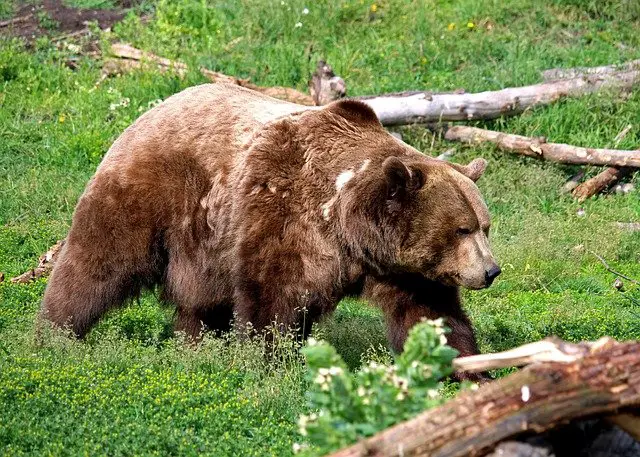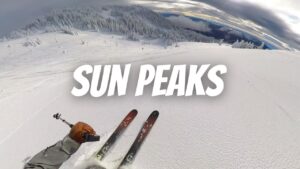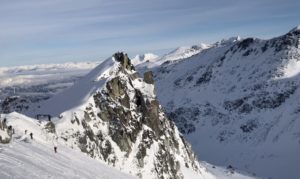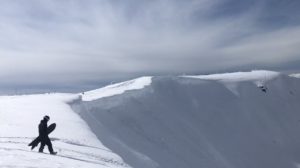Table of Contents
Wildlife Safety & Preparation Basics
Whether you are venturing deep in the backcountry, running on a local well trafficked trail, or walking home from work, wildlife surrounds you. It is extremely important for everyone, whether you live in a wild, suburban, or urban environment to be familiar with the wildlife that cohabitate the area and know how to appropriately react and treat animals if you happen to have an encounter.
Animal encounters are typically very positive and are extraordinary experiences however, in rare cases when animals are threatened, startled, starving, or become habituated (desensitized to humans) these encounters can become dangerous. Although the probability of a negative or deadly animal encounter is exceedingly low (you have a much higher chance of being injured or dying on the way to work), the possibility of a wildlife encounter is greatly increased when recreating in natural environments.
This post will teach you how to identify the different species of potentially dangerous wildlife in Canada, how to react in the occurrence of a wildlife encounter and what to do if the animal becomes aggressive.
To reiterate, it’s essential to remember that when you are recreating outdoors you are in an animals home, it’s not yours, so remember to give any wildlife you see lots of space, be respectful, stay quiet and NEVER FEED ANIMALS. We have all heard it before, a Fed Bear is a Dead Bear.
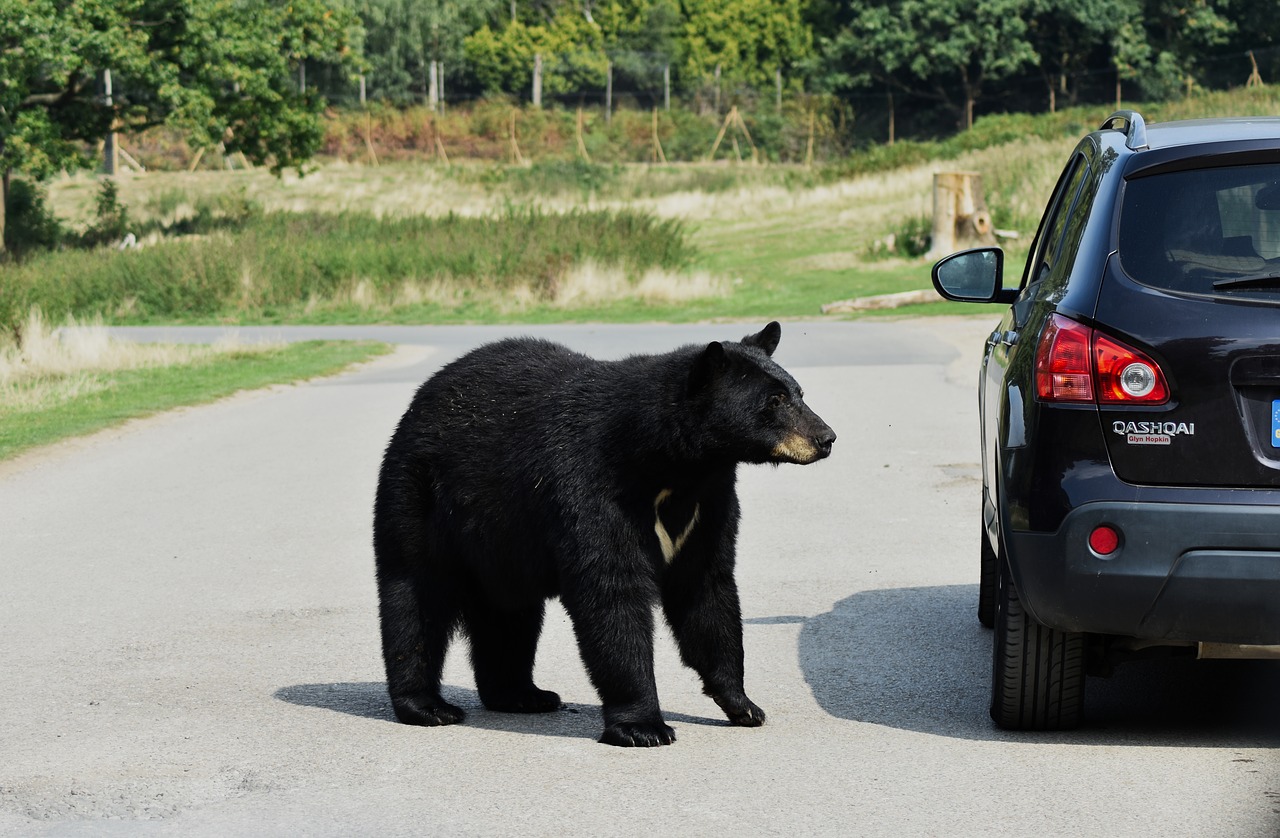
Bears
Let’s begin with the most celebrated and most feared animal in the Canadian Wild. The Bear! Bears exist across our gigantic country with the majority situated in my own home province British Columbia. BC is the best place to visit if you want to see your first bear in real life. The two bear species that you will encounter are black bears and Grizzly bears (brown bear). Many believe that the color of a bears fur and size is the ultimate distinguishing factor between the two. While this is sometimes the case black and and grizzly bears often are confused as the colors and size can be very misleading. Many grizzly bears have a darker coast and some even have white fur like a polar bear. You can’t just assume a bear is one type or another based off the color and size. Stronger physical traits such as the face profile, ears, shoulders and prints are best used to identify them. Bear identification is an important skill as both bear types have different temperaments, and you will have to act differently in a worst case bear attack situation.
Identifying A Black Bear
Have a straighter face profile, tall pointed ears, no shoulder hump (add paw print photo)
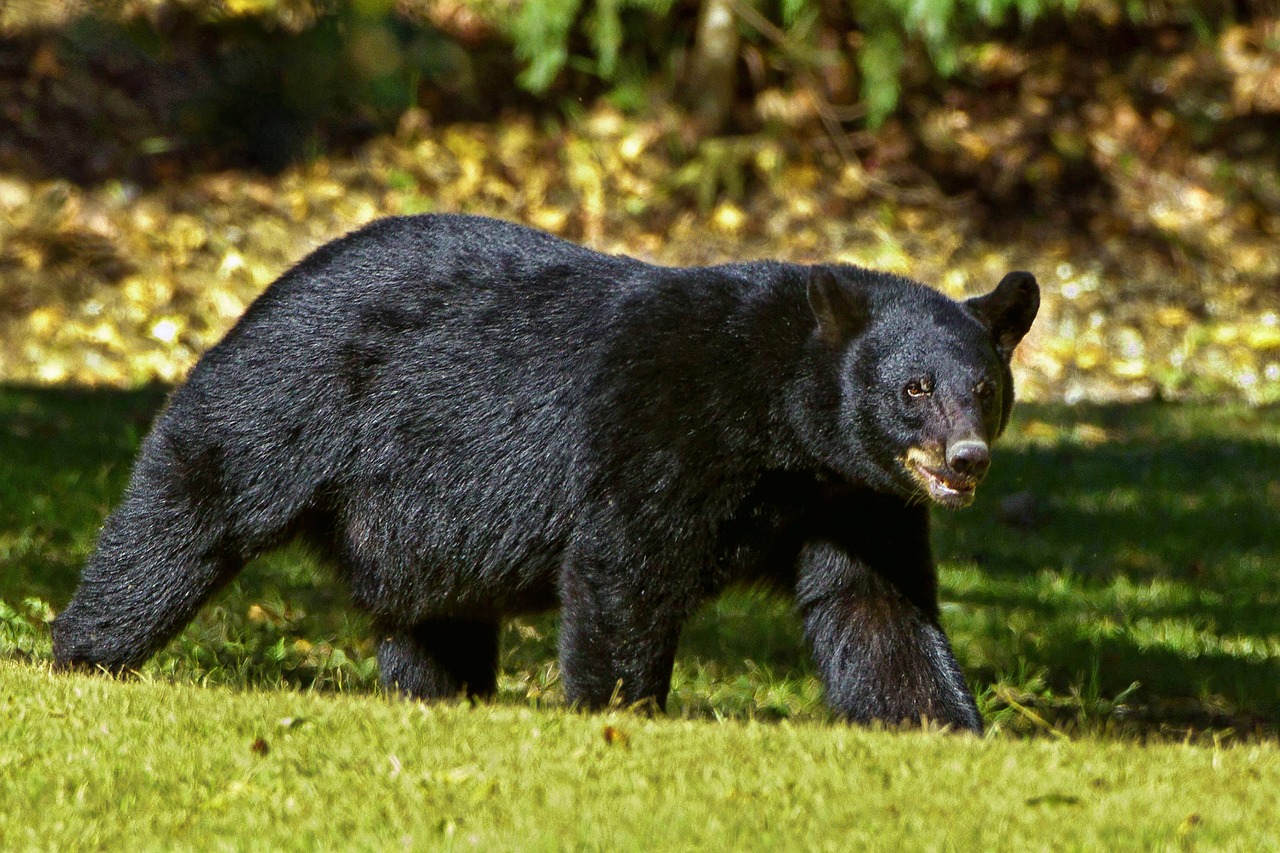
Black bears are the most abundant and the most intelligent of the species. They love food, and they want yours.
Identifying A Grizzly Bear
Dished face profile, short rounded ears and most importantly a big shoulder hump (Add paw print photo)
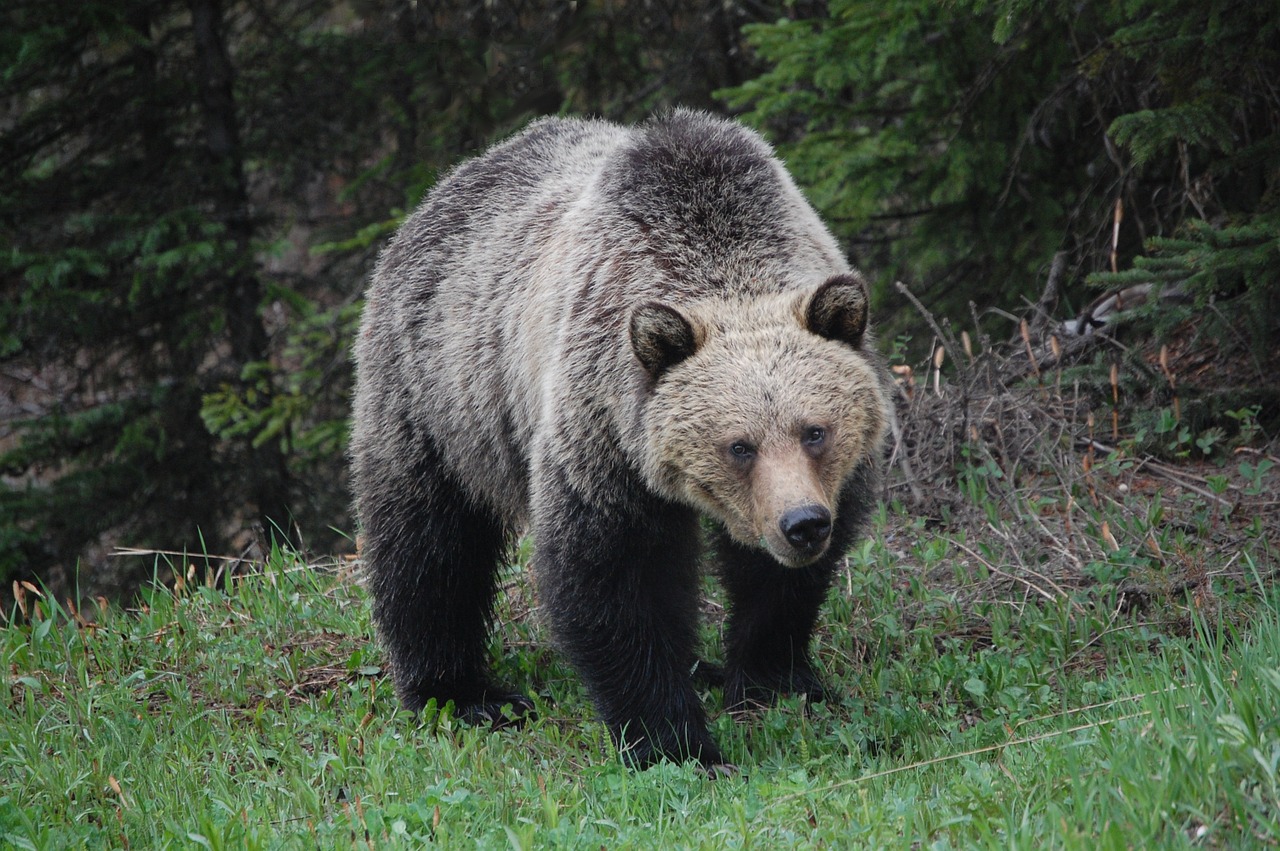
Great pictures and infographics to help with bear identification: http://www.bearsmart.com/about-bears/know-the-difference/
What to do if you see a bear
- Stay Calm
The bear is likely minding it’s own business. Always face the bear and keep your eyes on it. Do your best to recognize the bear. However, if it notices you, get curious and makes eye contact then begin to talk in a low calm voice “Hey Bear, Hi Bear, I see ya bear”. This will let the bear know that you are a human and not a predator.
- Do Not Stare
Always keep the bear in your peripheral vision but stare somewhere away from it over it’s back or shoulder. A bear will see this as a challenge.
- Back Up Slowly
Do not turn around, and do not run this could trigger an attack from the bear. Keep your gaze on the animal and back up slowly so you do not trip. Have your bear spray in your hand and ready in case it approaches or charges.
- Give it Space
Ensure that the bear always has a way to get away from you and that you are not in between the bear and it’s cubs or food.
What to do if a bear charges
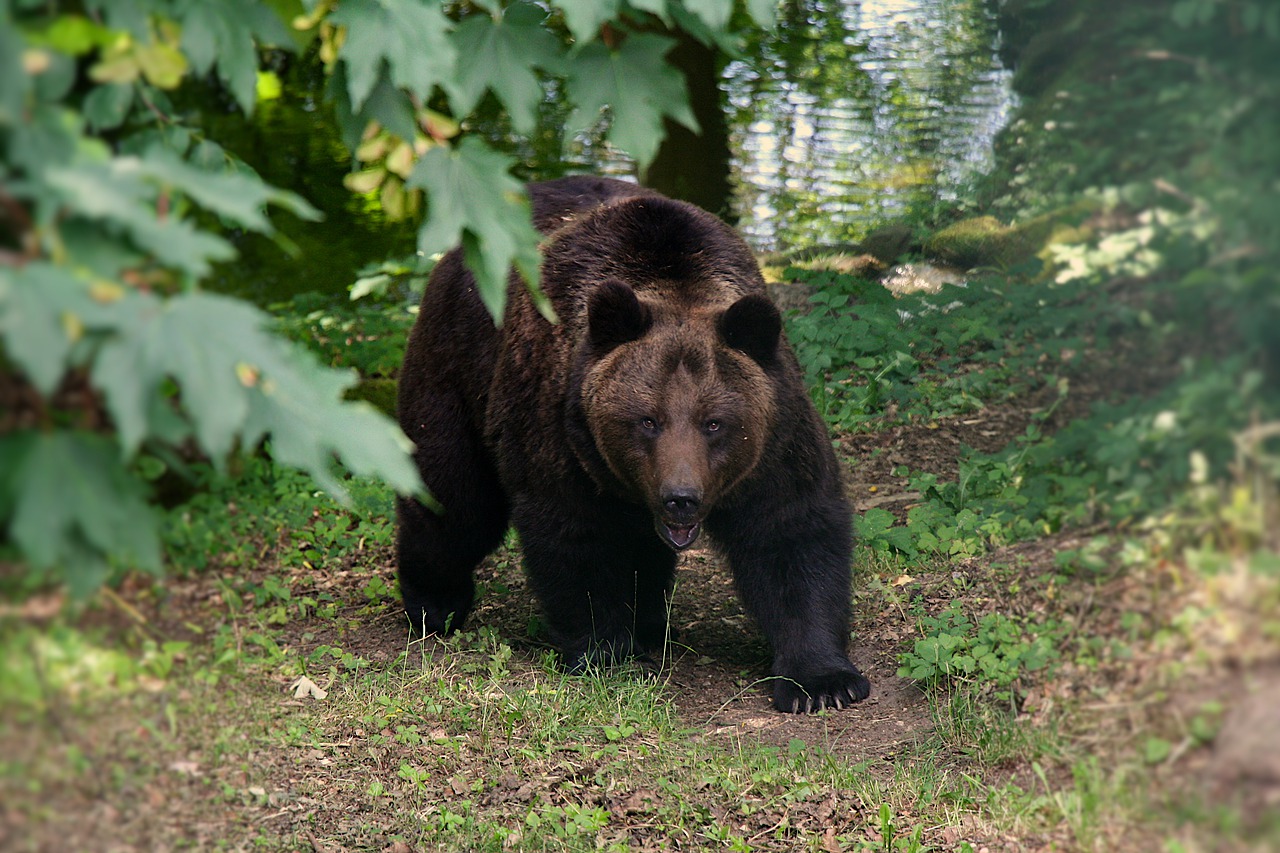
Bears will likely bluff and turn away at the last second but continue to act big, be loud, stand your ground and get ready to use your spray.
If the bear charges and comes within 10 meters of you. USE YOUR BEAR SPRAY!!!
Make sure you know how to use your bear spray and it is easy to access in such a situation. Bear spray is a very productive last resort measure if used properly. Ensure you know the wind direction so the bear spray does not blind you and make sure to wait until the bear is within ten yard before you fire. Bear spray is used by holding the can with two hands. Spray down towards the bears face and don’t stop until you run out of spray. Check out this (how to use bear spray video).
If the bear spray works, the bear will be repelled and you will have time to escape from it. Most bears will run away after being sprayed but it is best to leave the area all together in case they return.
What if the Spray Doesn’t work and the bear attack continues
If a Black Bear is attacking,
Fight Back. Black bears are motivated by hunger so you have a much better probability of surviving if you fight like hell. Use whatever objects that you have at your disposal including your fists and feet and focus all fighting efforts at the bears face and muzzle.
If a Grizzly Bear is attacking,
Play Dead. Never try and fight off a Grizzly bear. Grizzly’s will not stop until their target is dead. Lay flat on your stomach with your hands clasped around the back of your neck. This protects your organs and neck. Remain still until the bear leaves the area and then find help.
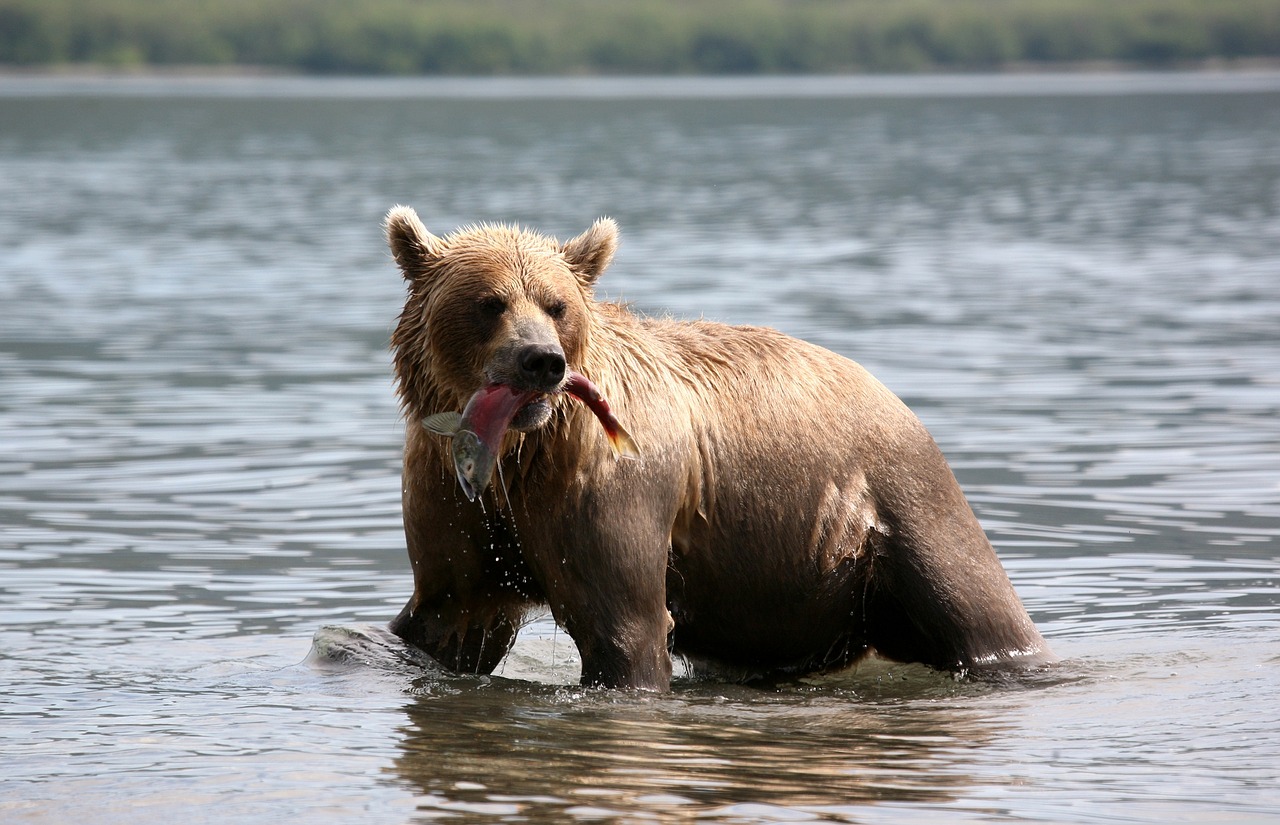
Remember bear attacks are uncommon and usually occur because a bear is protecting their food, cubs, or space. The majority of attacks recorded are by black bears, however this is because they are more abundant than its much more aggressive cousin the Grizzly bear. Grizzly bears seldom attack humans on sight and tend to avoid humans. However, their temperament is more unpredictable than that of the black bear. Grizzlies will precede an attack with a growl or a huff and in many cases will stand on their hind legs.
Great pictures and infographics to help with bear identification: http://www.bearsmart.com/about-bears/know-the-difference/
Moose (Canada’s Deadliest Animal)
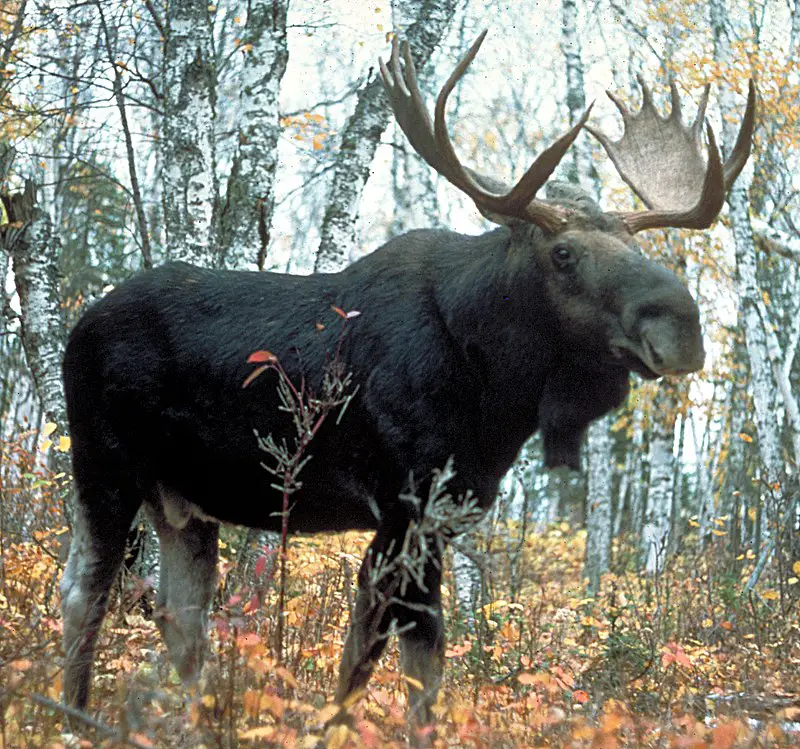
Moose and elk are unbeknownst to many the most deadly animal in the Canadian outdoors. This is largely due to the abundance of moose and the amount of automobile collisions. However, do not assume moose are big ole’ cuddly gentle giants. They are leaps and bounds more dangerous than bears in terms of their behaviors and injure the highest amount of people in the outdoors, more than any other animal.
Moose are absolutely massive and the males weight in between 400-700kg. They can kick with their front and back legs, stomp on you and attack with their antlers. Moose become the most dangerous during late spring and early summer when a cow (mother) fells that her calf is in danger. They can also become dangerous when a breeding bull (male) is competitive and agitated or when they are hungry and tired of walking in deep Canadian snow in the winter.
You can determine if a Moose is becoming aggressive by noticing changes in it’s body language.
Warning sings of aggression
- It stops grazing and looks at you
- Lays back its ears and raises hair on its neck, back or hips
- Lip smacking and teeth clicking
- Lowers it’s head and walks towards you
- Urinates
- Shows eye whites
- Whips it’s head back
A moose may even charge without any warning at all.
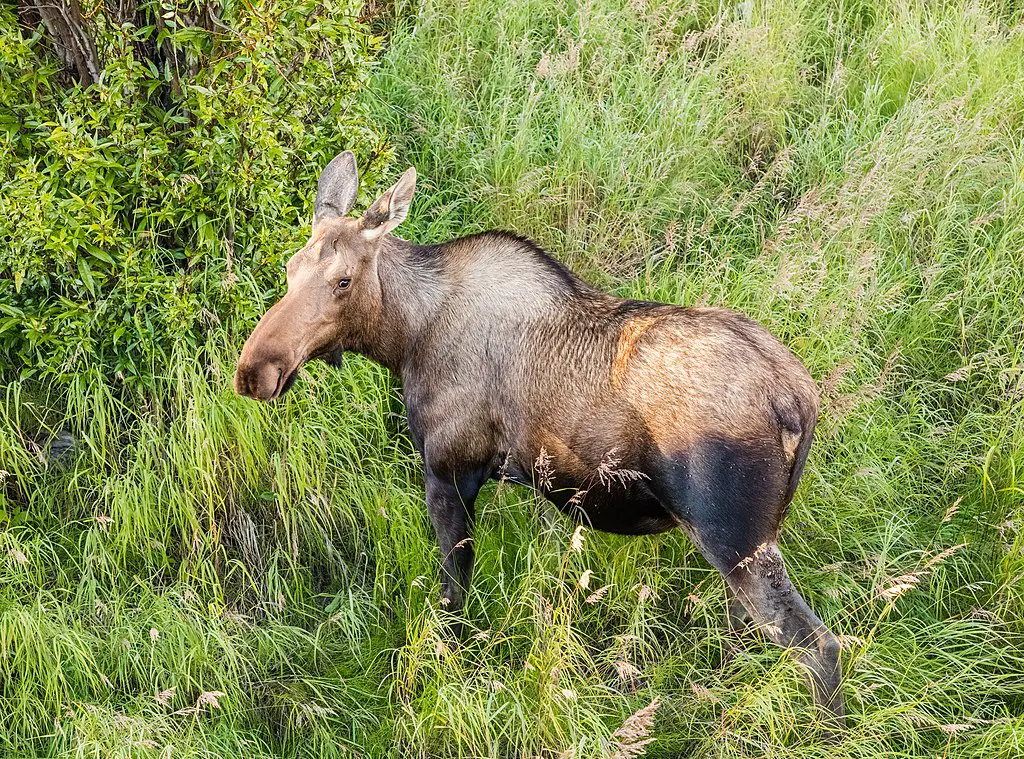
What to do if a Moose Attacks
Turn and Burn. Or in other words, RUN. Try and get away from the moose and hide in a car, behind or up a tree, fence or building that will provide a barrier from you and the beast. If you cannot protect yourself lay in a ball with your hands over your neck to protect your organs. Do not get up or move until the Moose moves away as you do not want to trigger a secondary attack.
Wolves
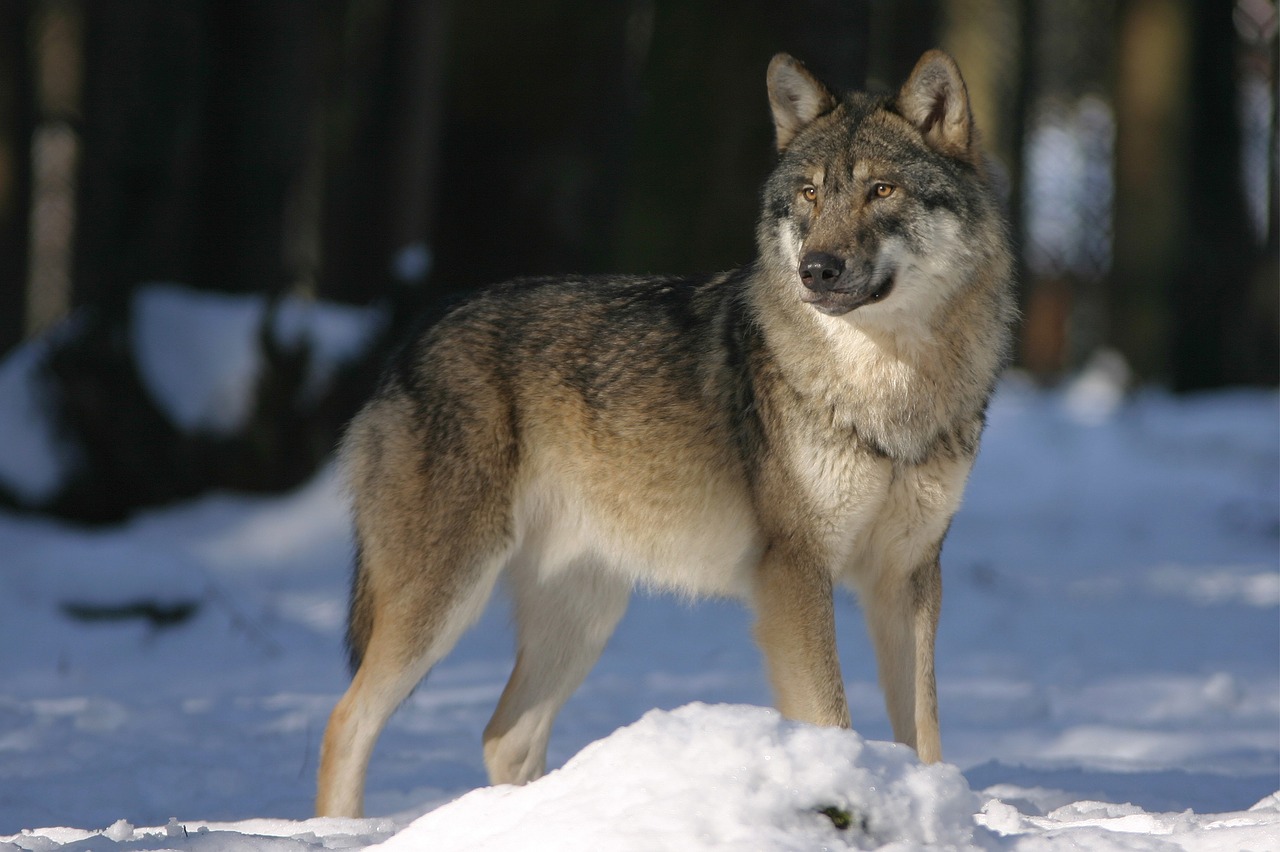
Wolves usually avoid humans and have excellent hearing so are well aware of you approaching and will likely give you a wide berth. They typically only pose a threat to injured or weak humans (small children or animals). If you come across a wolf stand your ground and do not turn your back or run – Act big and make eye contact.
What if a Wolf Attacks
If the hair on their back rises signaling aggression start yelling and throwing things in their direction. Do not lose you footing or fall to avoid being attacked. Use whatever you can to fend them off if they do attack. You have great odds of success when fighting off a wolf because you outsize the anima by a wide margin.
Cougars
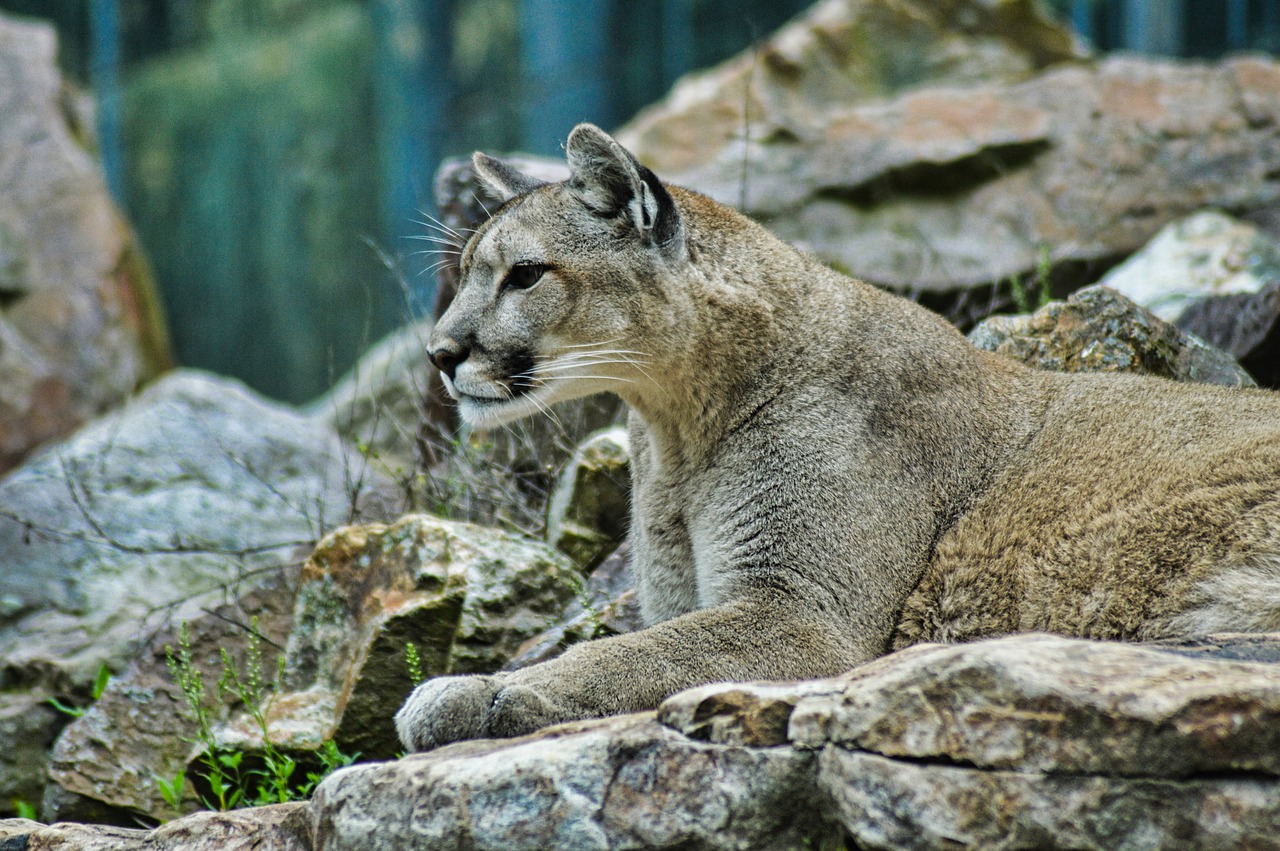
Cougars are in my opinion one of the coolest animals in the BC backcountry, however they are the last one I would want to run into. Even though cougars rarely attack or interact with people (in 100 years only 5 people have been killed by a cougar in N.A.) we don’t have a ton of information on them or why they behave the way they do. Solo hikers, younger children are more prone to be attacked because they look like the best prey. Keep any pets on a leash in cougar territory and keep your eyes peeled for cougar footprints (Four toed paw with no claw prints), droppings or claw marks on trees. If you see any signs of cougars or suspect one to be following you it may be a good idea to turn around.
Cougars are lone hunters and can cover very large areas quickly. You really do not want to spot a cougar on trail, because there is a good chance if you do, that it’s been stalking you for a long time and wanted to be spotted. If you see a cougar close up, this is a bad sign, but stay calm and
What to do if a cougar attacks
If you see a cougar eye to eye, this is a very bad sign, but do your very best to stay calm. Do not run as this could entice an attack. The goal is to get the cougar to believe that you are a threat and not prey. So get big, raise your arms, your voice and speak firmly throwing rocks in it’s direction and even baring your teeth will retaining eye contact. If it pounces at you, use your bear spray or whatever object you have at your disposal and fight for your life.
Coyote
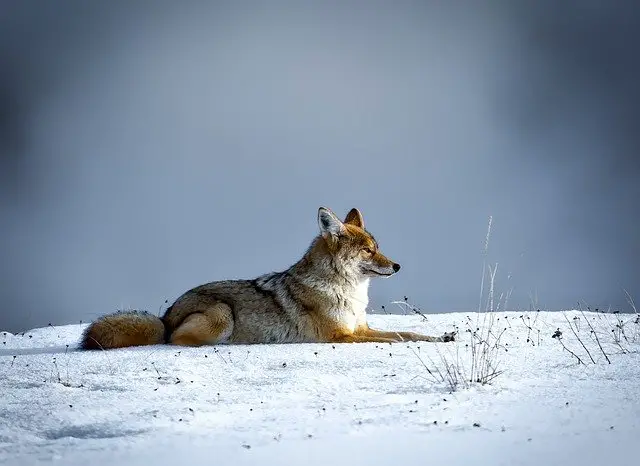
Coyotes exist in most outdoor, suburban and urban areas. They are very familiar with humans and there is almost no risk of death for adults and larger sized children. Attacks typically do not result in serious injury but frequency has been increasing over the past 20 years. There is risk however for small children and you family pets. Some irritated, likely well fed coyotes were very aggressive this winter in Vancouver’s Stanley park and were actually nipping/biting at Joggers. None who sustained life threatening injuries.
Don’t run from coyotes, stand ground, yell and wave your arms throwing things in their direction. If they grab hold of a child use force on the coyote so the release.
Snakes
Snakes are of very little concern in Canada, especially in British Columbia. There are less than 10 snakebites reported in Canada every year. There are 35 speices of snake in our country four of which are venomous. The most dangerous is the prairie rattlesnake which resides in Saskatchewan and Alberta. These bites typically occur when a victim sticks a limb into a hole, rock or bush. If a snake is following you stomp your feet as the ground vibration can confuse it. If you get bitten contact a medical professional and head to the emergency room immediately, move the limb as little as possible and try to remember the snakes appearance and the time the bite happened.
Do Not, Suck the venom out. This is something that is done on the movies but it does not work in real life. Your best bet to protect yourself from snakes if you are in their territory is to wear a solid set of hiking boots and socks, or pants.
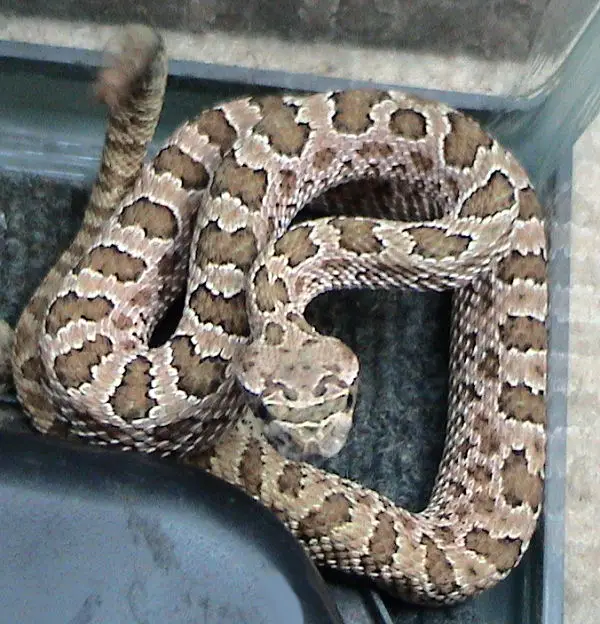
Animal Attack Prevention
The best way to protect yourself is to practice negative animal encounter prevention tactics measures when recreating in the wilderness. These include,
Proper Food Storage/Wildlife Proofing your Campsite
Ensure that all of your food and garbage is beyond the reach of animals and dispose of garbage properly. If you campsite is kitted with a bear box or storage locker for food then use it. Your vehicle, or a food hang up a tree are also great options for those delicious smelling snacks. Never keep your food in your tent or leave it lying around your site! Coffee and Toothpaste are like catnip for big bears so make sure to keep these items stored properly with your food. A great practice is to use the triangle setup. Cook your food 60m away from you tent and store it 60m away from your tent and cooking area. Make sure you don’t leave any leftover food scraps on the ground in your cooking area.
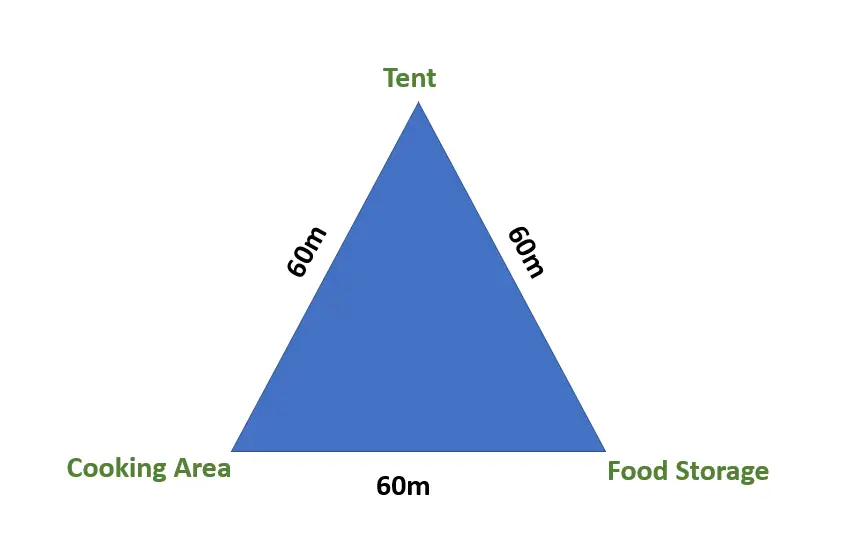
Travel with friends
Bear attacks are much less common among larger groups. Ensure you are travelling with groups of people and talking and making some noise. If you happen to be solo, carry a bear bell or whistle/sing while hiking.
Give Animals Space
If you are lucky enough to encounter an animal always give it tons of space. Never get inbetween an animal and its cubs or it’s food.
Carry Bear Spray
Always carry bear spray in bear territory. Make sure your cannister is not expired and ensure that you know how to use it.
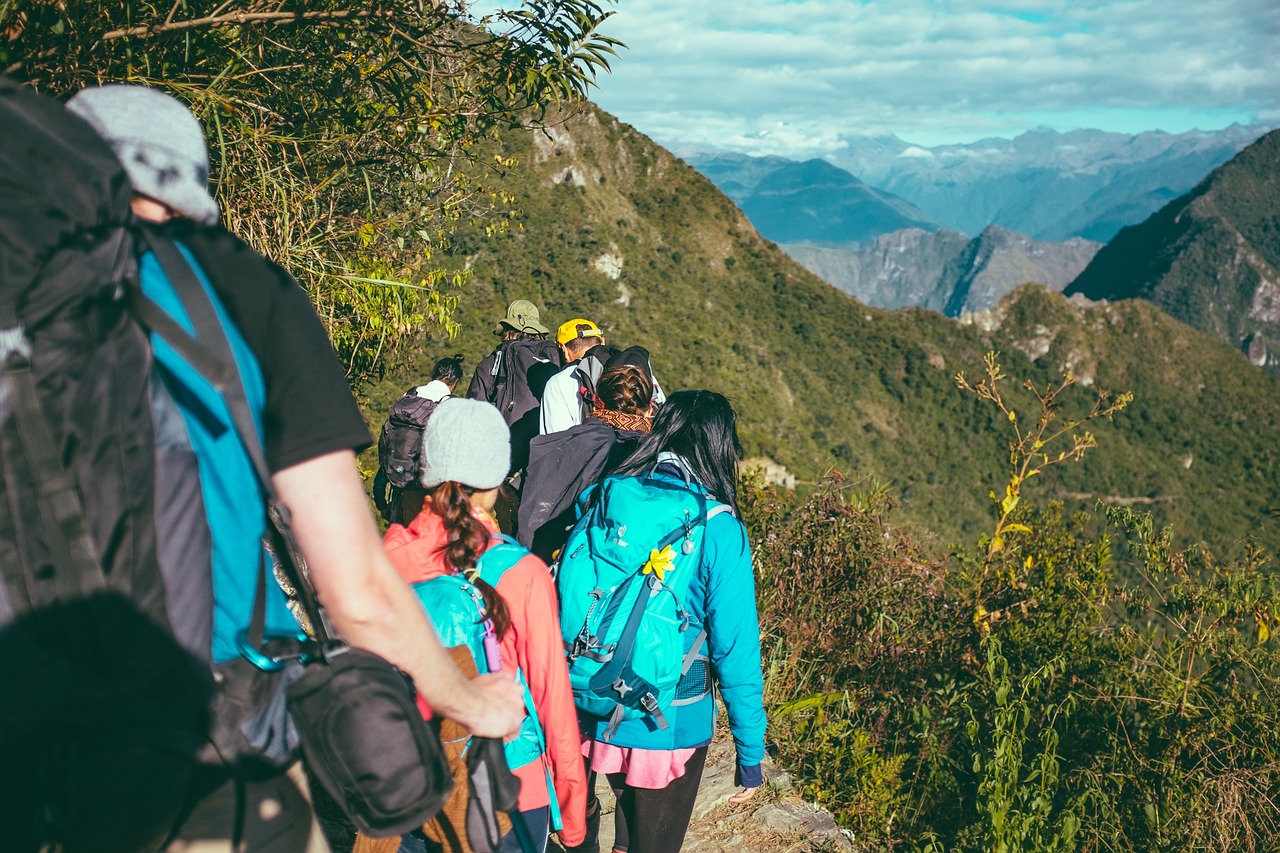
Let’s review, If you come across an animal.
- Stay calm (back away slowly, if it notices you stay calm and stand your ground)
- Let animals know that you are a human (animals are usually confused so if you talk and wave your arms around it may become disinterested)
- Be Loud (talk loud and yell if needed)
- Be Big
- Do Not Run (running is a prey response)
- Do not turn your back and back away slowly.
- Always avoid negative encounters in the first place
Encountering and observing wildlife of all sorts is one of the reasons I love the outdoors so much. It’s amazing to see such beautiful creatures going about their daily life. You always need to be prepared for the worst but, if you’re mindful and give animals their space you will continue to have extraordinary encounters with animals that you will remember for a lifetime.
Have you ever encountered one of these “dangerous” wild animals in Canada?
Let me know in the comments.

